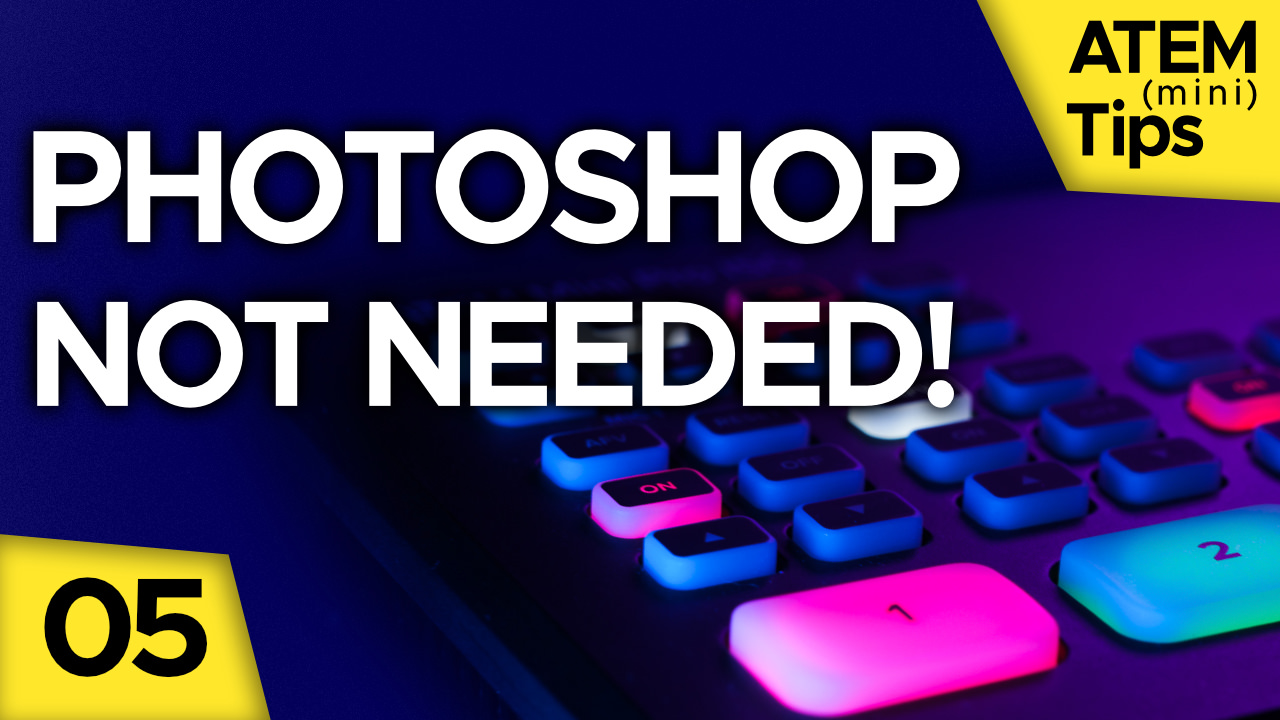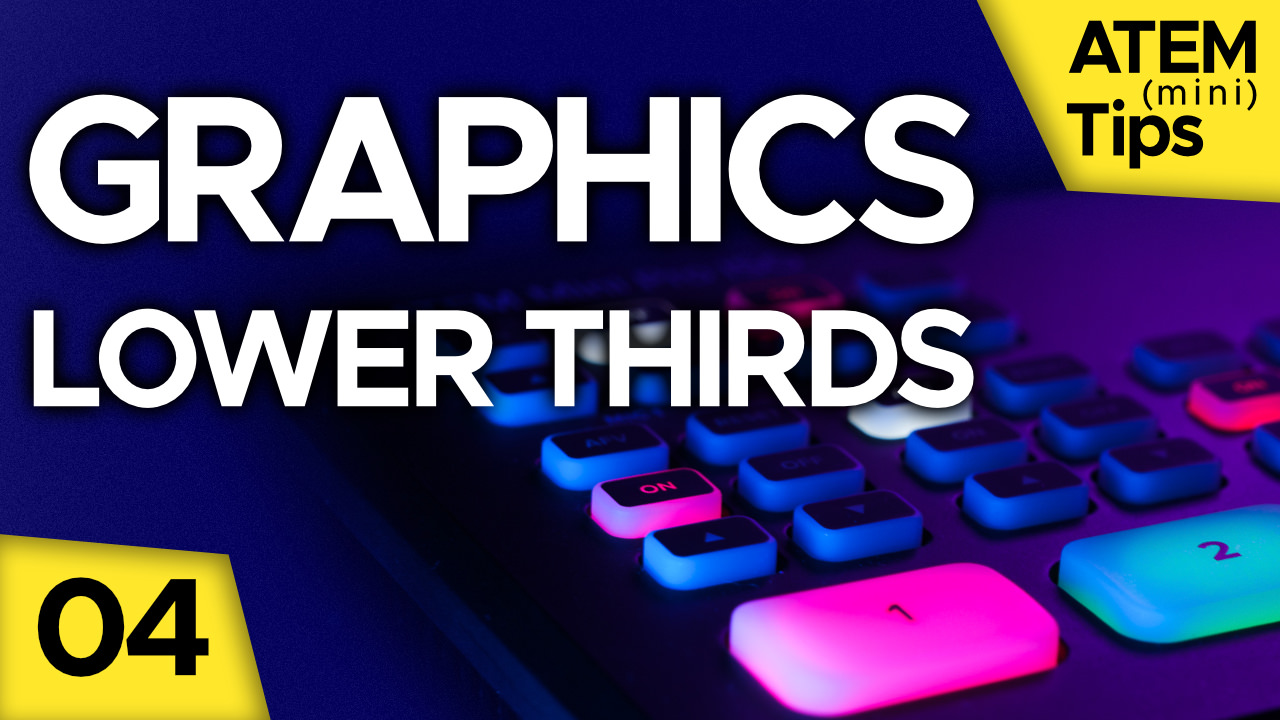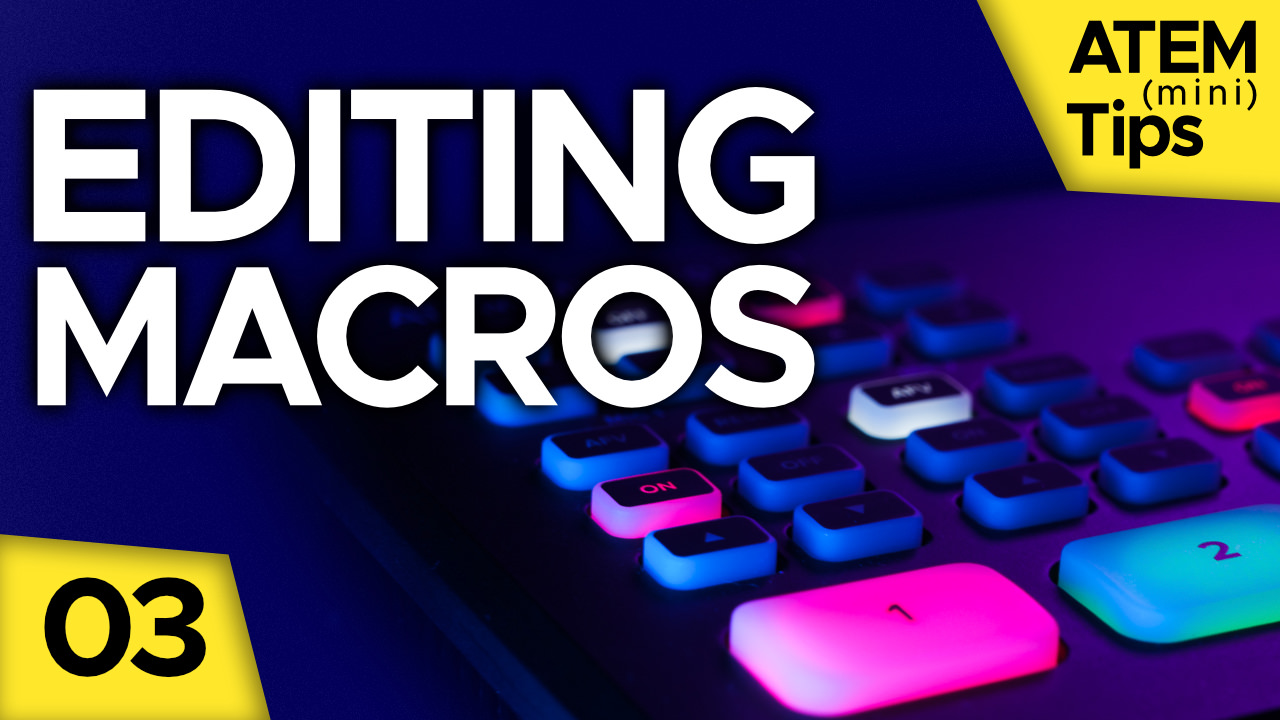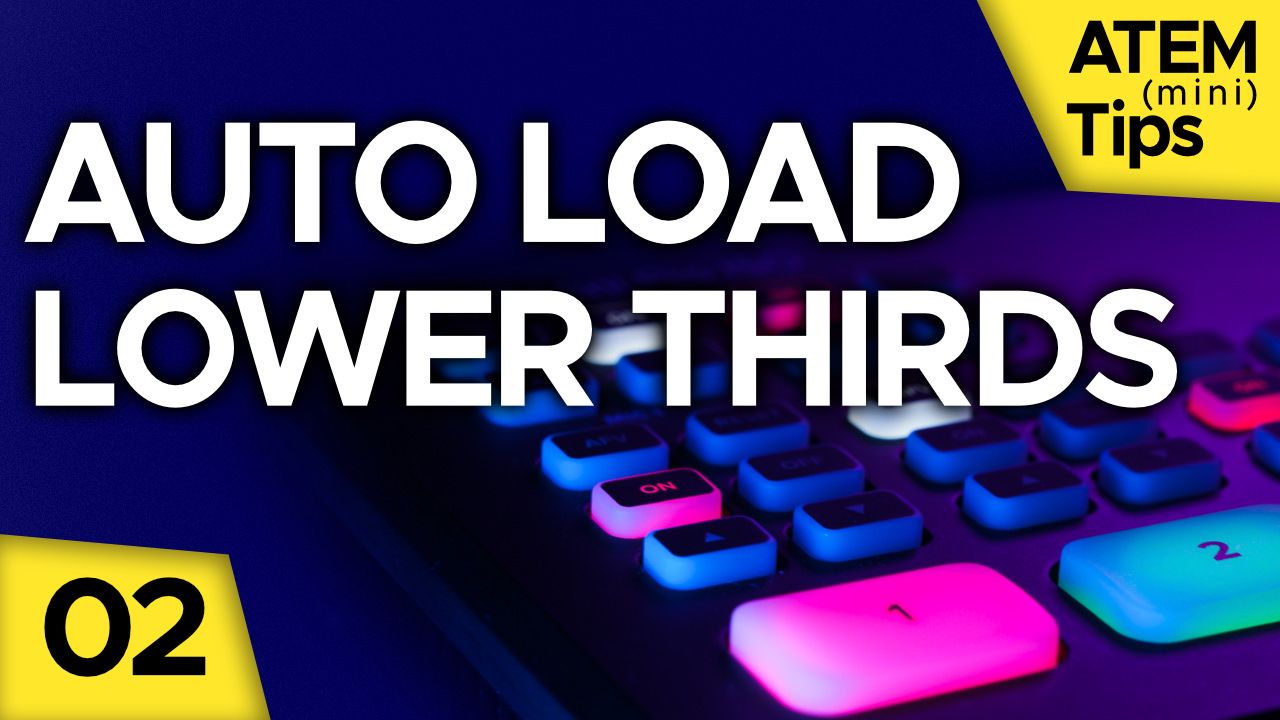[00:00:17] In today’s ATEM Mini Tip, we’ll be talking about why and how you might want to connect your ATEM Mini to your network. I’m trying something new on this channel where for the next couple of months, every new video will have ads disabled. No more ads. I know that I don’t like watching them and I’m sure you don’t either.
[00:00:17] What that means is that I’m asking you instead to consider becoming a channel member. If you’re benefiting from the videos that I’ve produced here on YouTube, consider signing up. It cost just 99 cents a month or more if you want to but that allows you to support me without having to watch ads. So, let’s get into this tip.
[00:00:32] We’re talking about putting your ATEM Mini onto your network. First, “why”, and then “how”. So, let’s talk about why to begin with and let’s actually start by talking about what happens if you don’t connect it to your network. To start off, the ATEM Mini by default connects to your computer over USB. A simple USB-C cable from the ATEM Mini hardware into your Mac or PC.
[00:00:50] This allows you a couple of things — it gives you complete control over the hardware (switching, adding graphics, changing audio settings, and so on), plus it allows you to see your ATEM Mini as a webcam in software like Skype or Zoom. And if that’s all you need out of your ATEM, then that’s great, you probably don’t need to watch this video. Hope to see you in the next one.
[00:01:08] But for those of you who do want to take it to the next level, here’s why you might want to add your ATEM to the network. First of all, if you want to stream from the ATEM hardware itself, meaning, streaming to YouTube, Facebook, whatever, then you need to have your ATEM on your network. It needs internet access and the way that it gets that is by connecting to your local network. So, that’s the first one.
[00:01:27] But even if you’re not live streaming from it, you can still benefit by putting it on your network. For example, you could access the same hardware from multiple computers on the network even at the same time. Meaning, you could have one computer doing the live switching while another one is controlling audio and yet another one is controlling graphics. So, that’s something you can do when you have the hardware on the network. Or you might want to be controlling it from third-party solutions like Companion on your desktop or even apps like MixEffect on your iPad.
[00:01:54] There’s lots of third-party solutions for controlling your hardware remotely but all the require a network connection. So, let’s first start with the connection over USB. I currently have this connected over USB but not to my network and if we look over here at my computer, you’ll see that I have the ATEM Mini Pro ISO connected and if you look at this little icon right here; that USB symbol tells me that it is connected to the computer over USB.
[00:02:16] At this point again, I have complete control over it, but if I want to add it to the network, then all I have to do is plug the Ethernet cable into the ATEM and the other end into my network. Okay well, what does that actually mean? Well, let’s back up a minute and talk about that.
[00:02:29] This is going to depend on the type of network you have and the type of environment that you’re in. Let’s start with the most basic — you’re just using this at home. At home, you have some type of internet coming into your house, over cable, fiber, whatever it might be — but it’s coming into a modem. Somewhere in your house, you have a modem that’s got a cable running in from the outside.
[00:02:46] From that modem, it might be connected to a Wi-Fi router. That Wi-Fi router is what gives you Wi-Fi connection throughout your house and that might be all you have. In fact, you might even have a single box that is both the modem and the Wi-Fi router all in one.
[00:02:59] Either way, there’s going to be an Ethernet connection somewhere on that router or on the modem and router combo. That LAN connection means that you can connect an Ethernet cable like this one into there and then the other end into a computer or some other device to give it direct network access. Why would you want to do that? Why not just connect everything over Wi-Fi?
[00:03:17] While Wi-Fi is great for things like watching video or browsing the web, it’s not so good for live streaming. So, the ATEMs don’t even have Wi-Fi built into them for this exact reason. Alright, so that’s why we’re not going to use Wi-Fi. So, let’s get back to connecting this.
[00:03:30] Where are we going to plug this in? Again, into that LAN port on your router or your modem. But what if that port is already taken? Maybe you already have a computer or other device on your network that’s plugged into that taking up that one port. Well, that’s an easy solution. There’s something called a network switch or network hub that you can add to your network giving you additional ports and that’ll allow you to connect multiple devices over the hardwire directly into your system.
[00:03:52] Beyond that, there’s a lot of ways that you can get even bigger and more extensive on this but if you are into a system like that, then you’re not going to gain anything from this part of that video. So, let’s just move on. Alright. So, you’re going to plug one end of this cable into your network and the other end into the ATEM.
[00:04:06] Before I do this though, let’s take another look at the software. From the ATEM setup app, if I go into the settings, we’ll see in here on the first page, Network settings and you’ll see that it currently has an IP address of zero, basically meaning it doesn’t have an address. This tells me that it’s not on the network.
[00:04:20] So, I’m going to go ahead and connect this Ethernet cable to the ATEM and in just a few moment over in the software will see that it gets an IP address. In my case, 10.0.1.57. This tells me that the hardware is now on the network. So now let’s back out of this and you’ll see here that the logo next to the ATEM Mini Pro ISO name has updated.
[00:04:40] We’re seeing both USB and an Ethernet connection icon. That tells me once again that it’s connected both over USB and over Ethernet. Now I can actually unplug the USB connection. As soon as I do that, you’ll see the USB symbol goes away. This tells me now that I’m connected only over the network.
[00:04:56] To control this, if I launch the ATEM software, in just a moment, it’ll update and we now see that we’re controlling the hardware. I can click on camera 1, camera 2 in here and we’ll see that those settings are changing both in software and on the hardware.
[00:05:09] So now, I’ve connected the ATEM to the network and I’ve disconnected the USB. What have I lost, what have I gained? We’ve already talked about what I’ve gained by connecting it to the network but I’ve lost something by disconnecting the USB. I no longer have the ability to treat the ATEM Mini as a webcam in software like Skype or Zoom, but I’ve actually gain something on USB as well. I’ve gained the ability now to connect an external hard drive to the ATEM to record the program, or if you’re using one of the ISO models, the program and the ISOs directly to that hard drive.
[00:05:36] Unfortunately, with the ATEM Mini, ATEM Mini Pro or ATEM Mini Pro ISO, you can’t do both at once. You can’t record the show and use it as a webcam because there’s only one USB port. If you need to do that, then there, you’re going to want to buy the ATEM Mini Extreme. The Extreme model has dual USB ports meaning that you connect both the ATEM as a webcam and connect it to a hard drive at the same time.
[00:06:00] But now that I’ve got my hardware on the network, once again, I can connect to it from multiple computers or even from an iPad. So here, I’m running an app called MixEffect, you can see my network address there of 10.0.1.57 and if I tap Connect, it’s going to go ahead and connect to my ATEM Mini.
[00:06:14] From here, I can now do the switching in software just as I could on the computer but now using the iOS app. But now if we look at all three of these at the same time, you can see that they’re all talking to the same hardware. Both apps are communicating with the same device at the same time. So, that’s the how and why you might want to connect your ATEM Mini to the network.
[00:06:34] If you have any questions about this, drop them in the comments below and if there’s a specific tip that you’d like to see, let me know in the comments below as well. I’ll add it to my list and be sure to get that done for you. Take care. We’ll see you in the next video.





Comments from YouTube